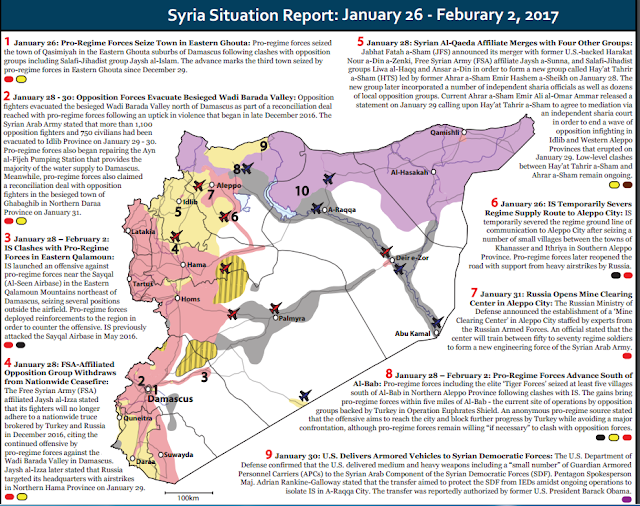ISIS will soon have lost all territory and will return to guerrilla style terrorist organization and Al Qaeda is organizing a Sunni Rebellion in Iraq
by noreply@blogger.com (brian wang) from NextBigFuture.com on (#2C4Z9)
Early indicators suggest that a post-ISIS Sunni insurgency may be forming in Iraq and al Qaeda (AQ) is trying to gain traction within it.
This essay highlights indicators that post-ISIS insurgencies are forming and that al Qaeda is present in Iraq. ISW (Institute for the Study of War) forecasted on November 30, 2016 that Iraq will likely face a renewed Sunni insurgency as military operations diminish ISIS's hold in Mosul. The U.S.-backed Coalition has been focused only on eliminating ISIS, not other insurgent groups or the conditions that grow them. Political conditions therefore permit an insurgency to take root. Iraqi insurgent groups that predated the rise of ISIS remain active, even though ISIS has tried to suppress them. These groups have publicized their intent to revive a resistance movement against the Iraqi state. It is too soon to assess whether these insurgent groups will operate under a national umbrella.
ISIS, nevertheless, continues to be active and capable of conducting spectacular attacks in Iraq and will remain so for months, despite its losses elsewhere in the country. ISIS launched a series of deadly attacks in Baghdad over the New Year holiday and has demonstrated its ability to attack disperse areas of Iraq, including Kirkuk, Tikrit, and Samarra, since operations in Mosul began in October 2016. ISIS, however, may begin to alter how it carries out attacks in Iraq as the group transforms from a governing to a guerrilla style terrorist organization. This shift will make attribution of attacks difficult, especially if signature capabilities erode or attack patterns change.
Recent anomalous attacks, therefore, need to be assessed equally as possible indicators that non-ISIS insurgents are already conducting attacks in Iraq and as indicators that ISIS is changing tactics or losing capabilities.
Here is an update on Syria

Read more










This essay highlights indicators that post-ISIS insurgencies are forming and that al Qaeda is present in Iraq. ISW (Institute for the Study of War) forecasted on November 30, 2016 that Iraq will likely face a renewed Sunni insurgency as military operations diminish ISIS's hold in Mosul. The U.S.-backed Coalition has been focused only on eliminating ISIS, not other insurgent groups or the conditions that grow them. Political conditions therefore permit an insurgency to take root. Iraqi insurgent groups that predated the rise of ISIS remain active, even though ISIS has tried to suppress them. These groups have publicized their intent to revive a resistance movement against the Iraqi state. It is too soon to assess whether these insurgent groups will operate under a national umbrella.
ISIS, nevertheless, continues to be active and capable of conducting spectacular attacks in Iraq and will remain so for months, despite its losses elsewhere in the country. ISIS launched a series of deadly attacks in Baghdad over the New Year holiday and has demonstrated its ability to attack disperse areas of Iraq, including Kirkuk, Tikrit, and Samarra, since operations in Mosul began in October 2016. ISIS, however, may begin to alter how it carries out attacks in Iraq as the group transforms from a governing to a guerrilla style terrorist organization. This shift will make attribution of attacks difficult, especially if signature capabilities erode or attack patterns change.
Recent anomalous attacks, therefore, need to be assessed equally as possible indicators that non-ISIS insurgents are already conducting attacks in Iraq and as indicators that ISIS is changing tactics or losing capabilities.
Here is an update on Syria

Read more